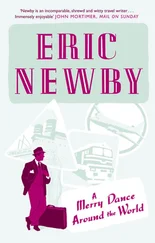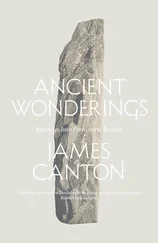Eric Chevillard - Prehistoric Times
Здесь есть возможность читать онлайн «Eric Chevillard - Prehistoric Times» весь текст электронной книги совершенно бесплатно (целиком полную версию без сокращений). В некоторых случаях можно слушать аудио, скачать через торрент в формате fb2 и присутствует краткое содержание. Год выпуска: 2012, Издательство: Archipelago Books, Жанр: Современная проза, на английском языке. Описание произведения, (предисловие) а так же отзывы посетителей доступны на портале библиотеки ЛибКат.
- Название:Prehistoric Times
- Автор:
- Издательство:Archipelago Books
- Жанр:
- Год:2012
- ISBN:нет данных
- Рейтинг книги:5 / 5. Голосов: 1
-
Избранное:Добавить в избранное
- Отзывы:
-
Ваша оценка:
- 100
- 1
- 2
- 3
- 4
- 5
Prehistoric Times: краткое содержание, описание и аннотация
Предлагаем к чтению аннотацию, описание, краткое содержание или предисловие (зависит от того, что написал сам автор книги «Prehistoric Times»). Если вы не нашли необходимую информацию о книге — напишите в комментариях, мы постараемся отыскать её.
Prehistoric Times — читать онлайн бесплатно полную книгу (весь текст) целиком
Ниже представлен текст книги, разбитый по страницам. Система сохранения места последней прочитанной страницы, позволяет с удобством читать онлайн бесплатно книгу «Prehistoric Times», без необходимости каждый раз заново искать на чём Вы остановились. Поставьте закладку, и сможете в любой момент перейти на страницу, на которой закончили чтение.
Интервал:
Закладка:
Others will be discovered. History is not made everywhere. There are secret places where prehistoric time accumulates. These underground galleries are spared the hubbub of the surface; they are today as they were fifteen thousand years ago, as if nothing had occurred in the world save some minor or not so minor geological events. The bringing to light of these sanctuaries suddenly overshadows History and its humble chronologies; it then becomes clear that we have exaggerated the importance of dynasties and revolutions: we belong to this same era, of which the future will be the judge, an era in which man more or less simultaneously discovered fire and the atom, when he learned to domesticate animals, overcome gravity, polish stone and vulcanize rubber, to write words and open roads, when he led grand expeditions on land and sea and in space, all the way to the moon, an era that was fleeting but fertile and that witnessed, one after the other, the invention of bronze and the motion picture camera, where both cave painting and abstract painting had their day, not to mention the steam engine, the universal joint, electricity, the wheel, the brush, the computer, infrared, and the harpoon, all of which contributed at the same moment to increasing the possibilities of man. It is an era whose unity we still have trouble comprehending and whose end we do not yet see; we are smack in the middle of it, but in all likelihood it will be considered as the dawn of humanity by our distant descendants before these descendants some thirty thousand years hence will in turn be put in the same category — primitive populations — by the newcomers, because, as we know, the past recedes, closes in around the origins, and every morning the child speaks of the previous day as the time when he was little.
If I were to believe Professor Glatt, the most authoritarian authority in this field, the figures found in the Pales cave are evidence of an intermittent artistic activity that covers — from the first engraved lines through the final paintings — a period of approximately twenty thousand years. At the end of the Magdalenian era, a rock slide partially obstructed the entrance to the cave, which was then rediscovered only twelve thousand years later, under the circumstances related above. At first it was thought to be a matter of a very simple cavity, a vestibule of twenty-five square meters decorated with three large ochre and black figures and a few smaller animals, mostly merely partially sketched, then an oval section of a passageway that opened to the right onto another chamber with a few paintings and then continued down a gentle slope until it reached a pit filled with fallen blocks of stone: the impasse. An attempt at clearing the way was made without much optimism, but these thorny efforts paid off and the path that was finally cleared gave access to the entire karstic network of Pales: six kilometers, nine chambers on three levels connected by numerous, sinuous galleries pierced with fireplaces, niches, diverticula, some of which were wide and passable, others which were steep or uneven, strewn with muddy potholes and imposing stalagmitic concretions; fortunately the slightest detail of this labyrinth was depicted on the map tacked in four places on the alveolar-like living room wall, five centimeters thick if you count the two centimeters of wallpaper glue that is generously spread on it and that acts as an insulating compound producing the occasional bas-relief effect where it blisters the off-white wallpaper that is slightly grainy so as to simulate roughcast, or that’s the idea, with which the walls of the adjacent dining room are also covered and at the back of which a glazed door joined with scrap wood opens onto a highly functional kitchen with laminated upper and lower shelves and eight square meters of pink wall tiling around a counter space with a double stainless steel sink and a dish rack, an oven with four electric burners topped by an efficient range hood nourished mainly by spaghetti with tomato sauce, just like me when it leaves me any, whereas the refrigerator stands on the opposite side, revving its engine and sometimes even starting to move, but it stalls immediately, never pushing its desire for adventure very far, and always returning from each of its journeys with fresh butter.
Let’s also retrace our steps, let’s take the corridor through which we arrived, but in the opposite direction, and return to the vestibule from which we set off; look down for a moment at the sedimentary rock on which we are treading, composed of quartz grains held together by a solid chalky cement, magnificent enameled sandstone tiles, thirty-three by thirty-three centimeters, laid out on the entire ground floor — so easy to take care of, ladies, that it is a real joy; they say that Cinderella gave up going to the ball in order to mop it and that her sisters were green and yellow with envy. At the rear of the vestibule, to the right of the corridor, let us pause in front of the prepainted flush door that leads to the cellar, where various objects that were collected in the cave are stored and not yet inventoried: another thankless task to which I am duty-bound. In the meantime, the public is not allowed in, step back please, I do not make the rules, let us please observe the proper flow of the tour. The second story is also worth a glance. The spiral staircase awaits us and only us to take flight — with its golden color and the stylishness of Scandinavian pine, it feels more like a schooner that heads to sea, spins around, and drops us safe and sound on the looped carpet of the landing, out of which branches another corridor with its tree-structured logic: to the left, a locked former guest room that now serves the dual purpose of junk room and office library, and is therefore doubly dusty; and the unavoidable small square room at the far end of the passageway with its glazed white porcelain bowl, à la salon de thé , and its double lid that should be closed, quickly please, before you leave, and then about-face! To the left again, but the other left this time, we can admire the separate room that holds the tub whose rosy-tiled nudity, barely veiled by a hanging bathrobe, discreetly echoes the kitchen wall covering — you remember it, the soul of a house is revealed through these subtle relations — the tub is in fact of the same rosy pink, but I have been forever loath to take baths, I have the very unpleasant sensation of drowning in a coffin and I prefer to use the flexible showerhead attached to the big mixing faucet whose red and blue discs are reversed, as is often the case, you just need to know; it is also these tiny, touching details that reveal a house’s soul. Finally, across from the unwelcome guest room but communicating directly, morning and evening, with the tub room, here is my bedroom, cluttered by a double bed, you have to wonder for what and especially for whom, with its five smooth, white walls — in a bedroom there are only ceilings — and its floor overrun with shoddy carpeting, and as sole furnishing, besides this half-useless conjugal bed, a wardrobe with a mirror, bandy-legged in my presence and which I intend to whitewash, brick over — I am one of those people who does not know how to behave in front of a mirror — and a chair sitting at its table near the window: view on the cave. Above the bed, Boborikine hung a reproduction of the headless woman, one of the cave’s most astonishing engravings. Let’s get out of here. We are heading back downstairs. The spiral staircase sinks into the wax polish as if it were butter, do not let go of the banister, you’ll slip.
IT’S A FIGURE engraved on a protrusion from the rock face so as to accentuate the bas-relief effect obtained by the line’s depth. Thus the stomach, drawn with conviction, uses the rock’s convexity to become even rounder above the three incisions of the pubic triangle, suggesting the lopsided walk of the hypertrophied pelvis, but then we hit a wall, the small of the back spreads as it disappears into the rock, the massive thighs are joined all the way down to the knee, then the line becomes less defined, fainter, as if distracted, the feet are barely sketched at all, two crude ovals; likewise the hands look more like stumps, but the arms are magnificent, the right one stretched along the body, the left, raised as if to make some sign, and the shoulder with its perfect outline, clean and sharp, would lodge itself so perfectly beneath its own armpit that our mind almost manages to imagine the voluptuousness of this impossible caress; the breasts, slightly shrunken, strabic, nipples off-center, are only hanging by a thread from the too-frail torso, two breasts disproportionate to the rest of the body, to the rest of the world, to babies’ hunger and man’s desire — what if she really were the victorious rebel woman? Freed from her role as mother and lover, not because of her body’s staunch refusal or her immolation in God, or the way she was purposefully made ugly; not in defense of her childish virginity, nor through the agony of her flesh, the length of her sharp nails, the coolness of her gaze, the arrogance of her words, the self-conscious concealment of her curves, but through their very excess, their total blossoming, their triumphant expansiveness, refusing all physical limits, overflowing her edges, she seems to defy the little sucking lips of infants, the small, frantic hands of men and their fever that is too short-lived to set her enormous body on fire.
Читать дальшеИнтервал:
Закладка:
Похожие книги на «Prehistoric Times»
Представляем Вашему вниманию похожие книги на «Prehistoric Times» списком для выбора. Мы отобрали схожую по названию и смыслу литературу в надежде предоставить читателям больше вариантов отыскать новые, интересные, ещё непрочитанные произведения.
Обсуждение, отзывы о книге «Prehistoric Times» и просто собственные мнения читателей. Оставьте ваши комментарии, напишите, что Вы думаете о произведении, его смысле или главных героях. Укажите что конкретно понравилось, а что нет, и почему Вы так считаете.












